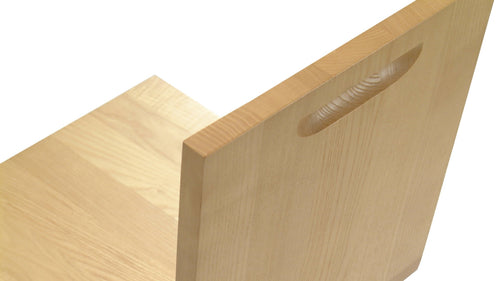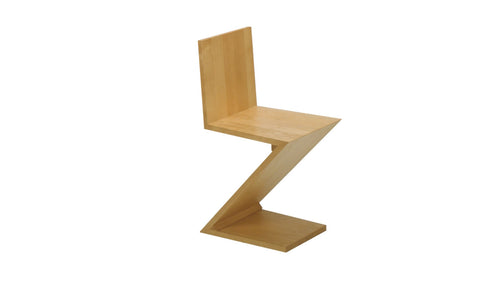Gerrit Thomas Rietveld
G. Thomas Rietveld
(1888-1964)
Colours can make all the difference; they outwardly declare what is usually only inwardly interpreted. A Dutchman, Rietveld was one of the most innovative designers of interiors and furnishings in the 20th century, already working with wood at the age of 11 in his father’s cabinetmaking shop. In 1911 he began to design and build furniture on his own, studying architecture at the same time. Rietveld’s “red&blue” chair (1917-18) is the first well known expression of his architectural language, displaying the influence of the De Stijl group and also the experiences of Mondrian and Van Doesburg. Published in the magazine De Stijl as a manifesto of the movement, it was later exhibited at the Bauhaus. The abstract purity of his furniture also permeated his architectonic style. In addition to buildings, Rietveld also designed shops, offices and movie theatres, all in his markedly original and creative style. Later, he drew closer to the ideals of rationalism, especially in seeking modularity; among the most important creations from this period there are the town houses designed for the Werkbund exposition in Vienna (1930-32) and, regarding furniture, the famous “zig-zag” chair.
Colours can make all the difference; they outwardly declare what is usually only inwardly interpreted. A Dutchman, Rietveld was one of the most innovative designers of interiors and furnishings in the 20th century, already working with wood at the age of 11 in his father’s cabinetmaking shop. In 1911 he began to design and build furniture on his own, studying architecture at the same time. Rietveld’s “red&blue” chair (1917-18) is the first well known expression of his architectural language, displaying the influence of the De Stijl group and also the experiences of Mondrian and Van Doesburg. Published in the magazine De Stijl as a manifesto of the movement, it was later exhibited at the Bauhaus. The abstract purity of his furniture also permeated his architectonic style. In addition to buildings, Rietveld also designed shops, offices and movie theatres, all in his markedly original and creative style. Later, he drew closer to the ideals of rationalism, especially in seeking modularity; among the most important creations from this period there are the town houses designed for the Werkbund exposition in Vienna (1930-32) and, regarding furniture, the famous “zig-zag” chair.


